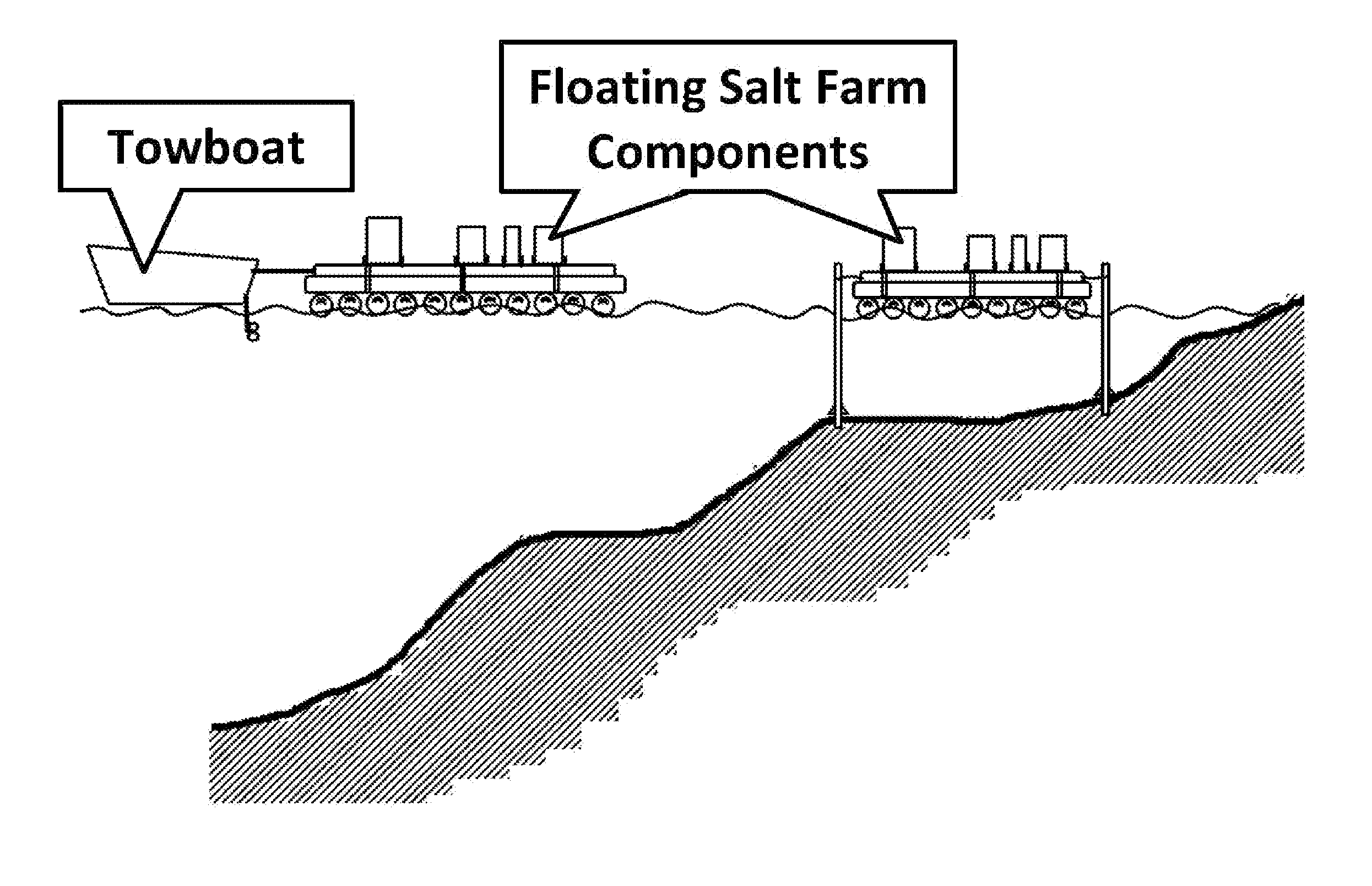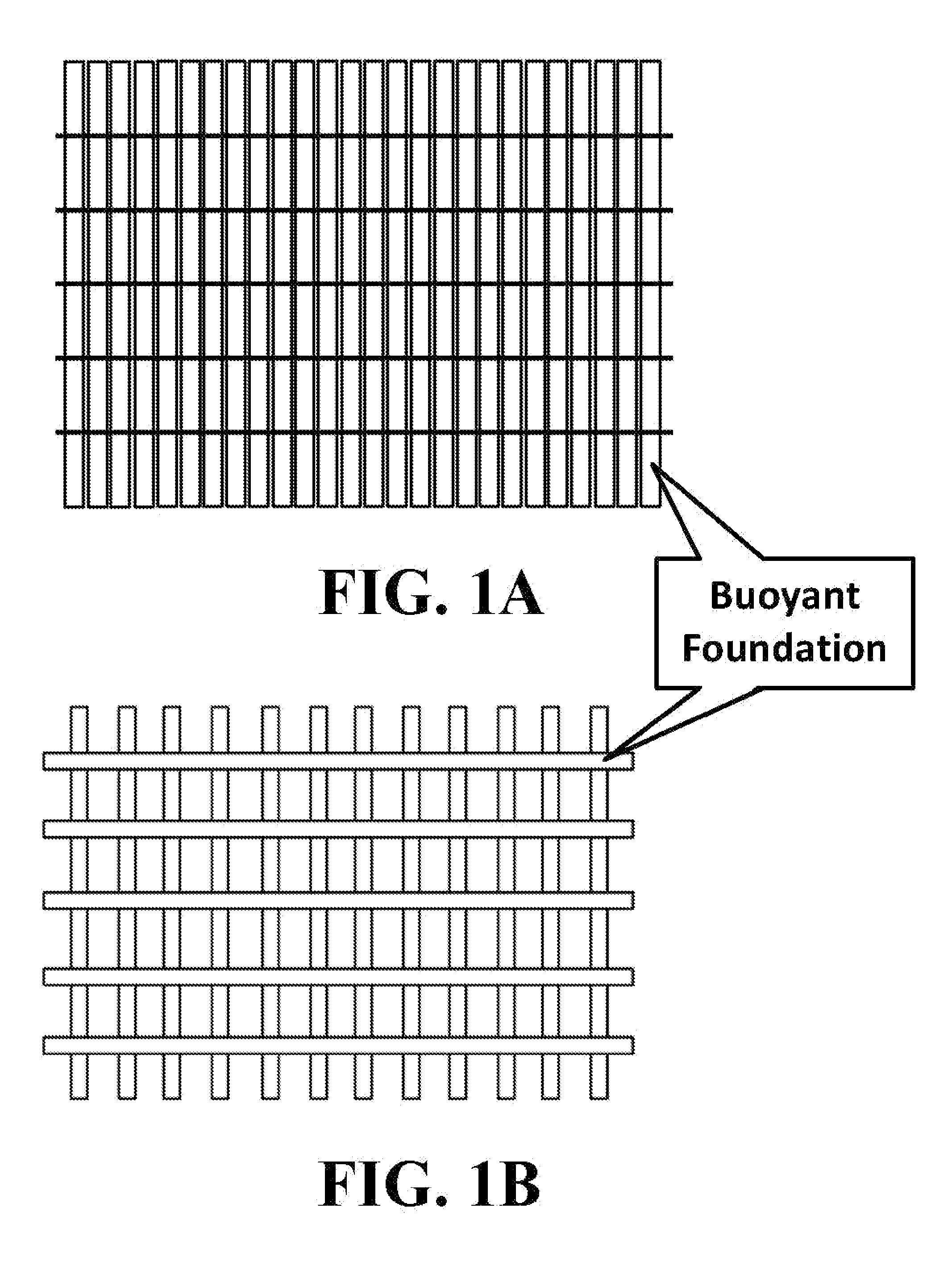Floating salt farm
a salt farm and flotation technology, applied in the field of flotation salt farms, can solve the problems of reducing the salinity of seawater, entanglement of water resources,
- Summary
- Abstract
- Description
- Claims
- Application Information
AI Technical Summary
Benefits of technology
Problems solved by technology
Method used
Image
Examples
Embodiment Construction
[0054]Detailed embodiments of the invention will be illustrated using the accompanying drawings as reference.
[0055]The buoyant foundation of the floating salt farm must have sufficiently high buoyancy, which must be able to support the weight of the salt farm components, which lies on the buoyant foundation. The buoyant foundation is composed of linked buoyant support structures and may be arranged into different configurations, as shown in FIG. 1A and FIG. 1B.
[0056]Other buoyant structures used to support the buoyant foundation of the floating salt farm may be composed of linked buoyant support structures as shown in FIG. 2A. The buoyant foundation may also be placed on top of linked small flat-bottomed boats as shown in FIG. 2B. A linked combination of different types of buoyant support structures may be used, as shown in FIG. 2C.
[0057]The salt farm components must be placed on the flooring deck, which lies on top of the buoyant foundation, as shown in FIG. 3A and FIG. 3B. The flo...
PUM
 Login to View More
Login to View More Abstract
Description
Claims
Application Information
 Login to View More
Login to View More - R&D
- Intellectual Property
- Life Sciences
- Materials
- Tech Scout
- Unparalleled Data Quality
- Higher Quality Content
- 60% Fewer Hallucinations
Browse by: Latest US Patents, China's latest patents, Technical Efficacy Thesaurus, Application Domain, Technology Topic, Popular Technical Reports.
© 2025 PatSnap. All rights reserved.Legal|Privacy policy|Modern Slavery Act Transparency Statement|Sitemap|About US| Contact US: help@patsnap.com



